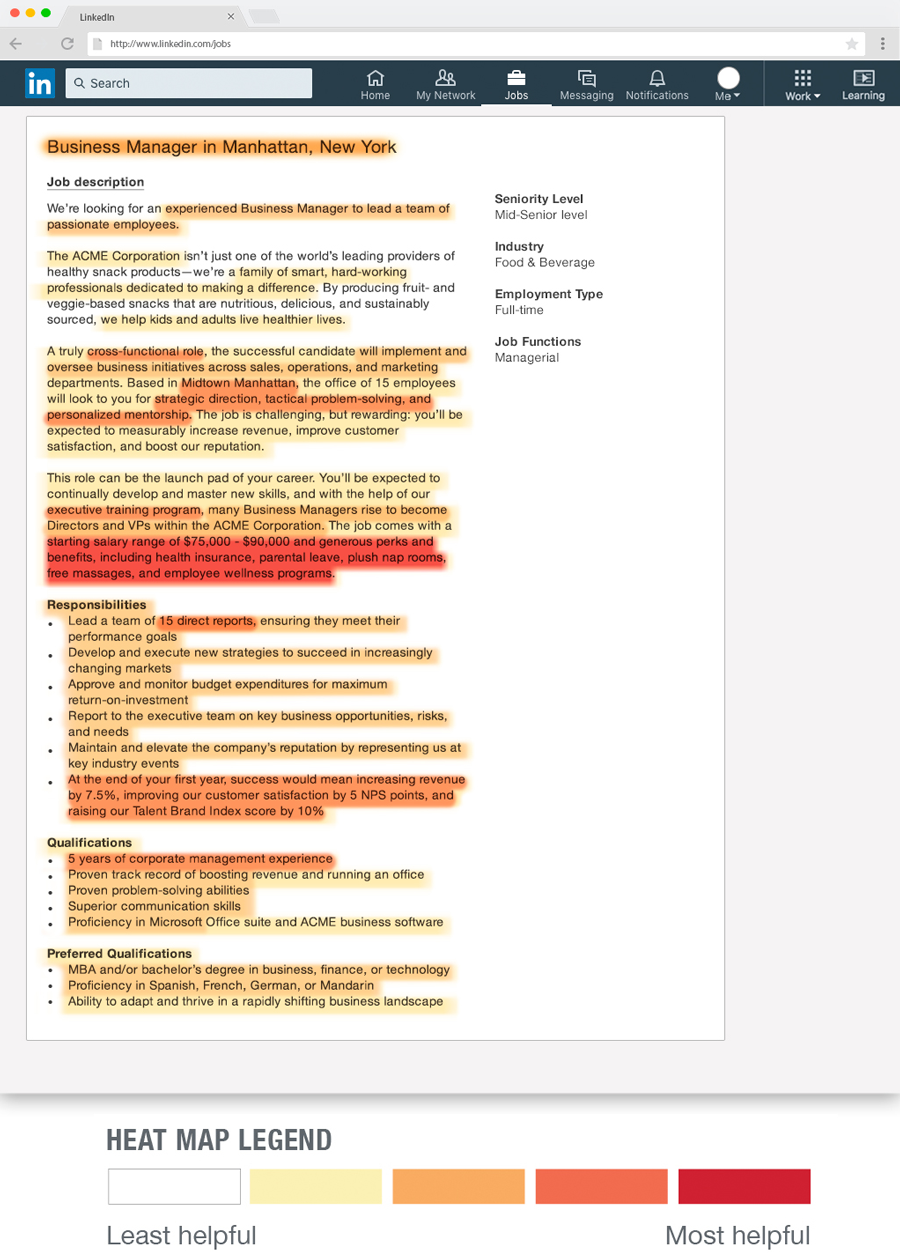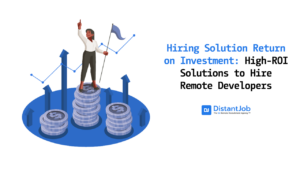When it comes to exploring ways to attract top talent, for many, it’s all about the money. Offering high wages is the best way to attract skilled candidates and retain your best employees. This is partially true, a good salary is always a motivation. However, attracting and engaging talent goes beyond a paycheck.
According to a report by Teamstage, company culture is a fundamental factor for 46% of job seekers. High employee turnover is often due to a misalignment in company culture, which leads to employees being unmotivated and unproductive.
So, how can you attract top talent to your company? What truly motivates top performers?
Let’s explore effective strategies that will help you craft a compelling value proposition that not only attracts but also helps you retain the industry’s best talent.
What Top Tech Talent Looks for in a Job?
Offering employees a good salary is always a good strategy to show them that their work has value. However, to attract and retain top talent, you need to think beyond the pay.
According to Harvard Business Review, which led a survey of 500 tech employees and 230 enterprise technology organizations globally, the main reasons that employees start looking for a new gig are:
- Lack of learning and growth opportunities
- Lack of flexibility
- Insufficient rewards and recognition for their work
In other words, employees crave working in a supporting work environment that offers three elements: growth, flexibility and recognition. Here’s how this translates into an actionable plan.
9 Essential Strategies to Attract The Best in Tech
1. It All Starts with the Job Description
A job description can have a huge impact on the types of candidates that apply to your company. It’s the introduction of your company, so you need to make sure you make a good impression.
However, while you might want to spend a good time crafting the perfect IT job description, there are some parts that are more important to candidates than others.
A LinkedIn study asked 450 members to identify the most relevant aspects of a job description and transform it into a heatmap:

The results? For most candidates, the first things they notice when evaluating a job description are the salary range and the benefits (these are the most highlighted portions). Other useful information are more specific details on the role (the tasks, responsibilities, direct reports, etc).
What this concludes is that usually, candidates, when they first bump into their job description, won’t care much about a large description of your culture or purpose. They want the hard facts, and if they think it’s worth it, then they will care more about these other aspects.
2. Have a Straightforward Hiring Process
A lengthy hiring application process is the best way to scare off candidates. While some roles, particularly in tech, require thorough evaluation, you need to ensure that the process is as concise and engaging as possible.
Especially for senior or more experienced roles, when they see that the process is long and requires too many things, despite having all the requirements, they are likely to either retain their current position or opt for opportunities where the recruitment procedure is more streamlined and user-friendly.
Here are some tips for streamlining your recruitment process:
- Start with a straightforward application form that collects essential information.
- Use applicant tracking systems (ATS) and other technological tools to automate parts of the recruitment process.
- Keep candidates informed about each stage of the process and what they can expect, and provide timelines to set the right expectations.
- Tailor assessment tasks to directly evaluate the skills necessary for the job.
- Consolidate interviews as much as possible. Consider combining initial screening calls and technical interviews into a single step or conducting panel interviews to get various assessments at once.
- Offer timely feedback at each stage, whether the candidate proceeds to the next step or not.
- Regularly assess and refine the hiring process based on feedback from candidates.
3. Offer Competitive Compensation
Let’s tackle the elephant in the room. Money isn’t the only thing candidates care about. However, this doesn’t mean you can offer them low salaries and expect them to accept the job or stay forever.
A McKinsey report revealed that 37% of tech professionals said that pay is the main reason they’re planning to leave a job, and 45% said pay is why they’re planning on taking a new job.
This highlights the importance of offering competitive salaries that reflect the value employees bring to an organization. Compensation should be seen as a tangible acknowledgment of employees’ skills, experiences and the results they bring to your organization.
If you’re not sure what’s the ideal salary for certain positions, here are some useful tips:
- Benchmark against the industry – Regularly research and compare your compensation packages against those offered by competitors and industry standards.
- Consider total compensation – Beyond base salary, think about the entire compensation package. This includes bonuses, equity or stock options (particularly in tech and startups), retirement plans, health benefits.
- Performance-based incentives – Implement performance-based bonuses or incentives that align with the company’s goals.
- Transparency – Be clear and upfront about how compensation is structured, including how raises, bonuses, and promotions are determined.
4. Train Your Hiring Manager to Identify Candidate’s Needs
Training hiring managers is a strategic approach that enhances your recruitment process and increases the odds of securing top talent for your team, as they’ll know to identify what each candidate is looking for.
This involves equipping hiring managers with the skills and insights to discern not only the professional qualifications and experience of candidates but also their career aspirations, personal values, and what they seek in a new role or workplace.
Here’s how they can do this:
Develop Emotional Intelligence: Training should focus on enhancing the emotional intelligence of hiring managers. This includes improving their ability to empathize with candidates, understand their motivations, and recognize the factors that contribute to their job satisfaction and engagement.
Active Listening Skills: Encourage hiring managers to practice active listening during interviews. This means paying close attention to what candidates say about their career goals, preferred work culture, and what they value in an employer.
Ask the Right Questions: Provide hiring managers with a framework or set of questions designed to uncover deeper insights into candidates’ needs and expectations. These questions should go beyond technical skills and experience, probing into areas such as work-life balance preferences, long-term career objectives, and desired company culture.
Training on Workforce Trends: Keep hiring managers informed about the latest trends in the job market and workplace expectations.
Customize the Candidate Experience: Teach hiring managers to tailor the recruitment process based on the candidate’s profile. For instance, a seasoned developer might value a streamlined interview process and clear communication about career progression opportunities, while a recent graduate might be more interested in learning and development programs.
5. Provide the Right Developer Tooling Kit
Every job is best performed when equipped with the necessary tools and resources. For example, doctors require the appropriate instruments to conduct surgeries effectively, artists need their specific setup to unleash their creativity, and, similarly, developers require a comprehensive tech stack to excel in their work.
The right developer tooling kit extends beyond the mere provision of tools; it involves creating an environment where they can use these resources to max their productivity and innovation.
For developers, the tech stack includes not just the software and hardware essential for coding but also access to the latest technologies, frameworks, and development environments that align with their projects’ needs. It also involves continuous integration and continuous deployment (CI/CD) tools, version control systems and collaboration platforms that facilitate efficient teamwork and code management.
6. Be Specific About Growth Opportunities
In other words, show them the big picture. “We have a lot of opportunities for growth and career progression” is a very generic statement. Anyone can say that.
Candidates want to know what these growth opportunities look like in a real context. For example, by developing a tailored professional development scheme, you can show candidates how career advancement works in your company.
You can also mention examples of current employees who have successfully advanced in their careers within your company. These stories illustrate the practical application of your professional development schemes and serve as proof that career progression is highly encouraged.
7. Provide Valuable Benefits
Your talent strategy should always be tied to what employees want. If you work in an on-site environment, you might think that free food or casual Fridays are fun perks, but think about this for a second: What do employees actually gain from these experiences?
It’s not that they won’t value them, but it will be easy to find another company offering exactly the same benefits.
But benefits like schedule flexibility and remote work is something that makes your job offer extremely competitive. According to Glassdoor, 86% of employees want to keep working remotely at least part-time.
Additionally, you need to consider that top talent already knows that they are skilled enough to get to choose where to work with. Here, they are not the ones begging for a job; it’s you who is competing with other companies. So, the chances are they will opt for companies where they can work with the flexibility and autonomy they want. People find it motivating to work with employers who trust them enough to not demand a fixed schedule or work location.
8. Establish a Strong Employer Brand
Does your company have a good reputation? What do your current or former employees say about you?
In an era where everything is viral and being online makes it easy to comment and attack without being noticed, reviews are everything. You can have a solid online presence or have an engaging job description, but if your reviews or reputation says your company is a bad place to work for, then top talent will want to be nowhere near you.
The best way to attract the best talent is to ensure your company is seen as a great place to work. According to LinkedIn, strong brands attract 50% more qualified applicants.
9. Build an Inspiring Work Culture
Work culture, at times, seems like a business lingo that has a broad definition. Everyone uses it, but what does it really mean?
At its core, work culture is all about how you connect with your company. It embodies the collective behavior, values, expectations and practices that guide and inform the actions of all members of an organization. And most importantly, It inspires.
Work culture is also a deal breaker for job seekers. According to studies, 15% of job seekers have turned down a job because of company culture. People, rather than just doing their job, they also want to feel that they have a purpose.
When recruiting talent, make sure to talk about your organization, your policies, how you foster a diverse and inclusive environment, and what your goals and vision are.
Getting Started: How to Implement These Strategies
Implementing strategies to enhance your organization’s appeal to top talent, improve work culture and streamline processes requires a structured approach. Here are some tips that will help you get started:
1. What Are Your Objectives?
Start by evaluating the skill gaps and areas of improvement in your work culture and recruitment process. This will help you define what success looks like for each strategy, whether it’s improving employee retention rates, enhancing your employer brand or reducing time-to-hire.
2. Make Time to Research and Benchmark
Look at industry benchmarks to evaluate compensation, benefits and work culture. Understand what competitors are offering and what candidates in your industry value. Keep in mind this also can depend on their experience level. For example, junior developers would value growth opportunities as well as training and development, while senior developers might want to take their careers into managerial positions.
3. Develop a Plan and Experiment
There’s never a one-size-fits-all solution to hiring top talent because all organizations are different. This is why it’s important to build a tech talent pipeline that works for you, and the best way to do this is through continuous improvement.
Create a detailed plan with actionable steps for each strategy. For example, if improving work culture is a goal, outline initiatives like employee recognition programs or flexible work policies. Then, regularly collect feedback from employees and candidates to learn about their experiences. This will give you insights to see what is working and what isn’t.
4. Equip Your Team
When it comes to innovative ways to attract talent, hiring managers play a fundamental role. This is why it’s key to provide them with training so they can learn effective interviewing techniques, identify candidate’s needs, and more. For this, ensure your team has the necessary tools like software to streamline the hiring process.
5. Consider Other Options
Considering other options to attract top talent can be a great way to save time and resources. For example, with the help of recruitment agencies like ours, you can rest assured that in less than two weeks, you’ll be onboarding your new developer.
Why? Because IT staffing agencies already have successful processes that allow them to headhunt top talent in no time. Additionally, both headhunters and recruiters have an in-depth knowledge of the industry, which allows them to quickly tap into candidates’ needs.
Hire Top Tech Talent for Your Team
Navigating the complexities of today’s job market requires a strategic approach to attracting top talent. From enhancing your work culture to refining your recruitment and hiring process; these strategies will put you on the map as a great company to work for. However, effectively putting them to practice can also be challenging.
This is where DistantJob comes into play. As a leader in remote recruitment, DistantJob specializes in connecting companies with the best tech talent from around the globe. You’ll gain access to a vast pool of skilled individuals ready to contribute to your success, adapting to your culture and process.
Want to know more? Let’s have a call!




